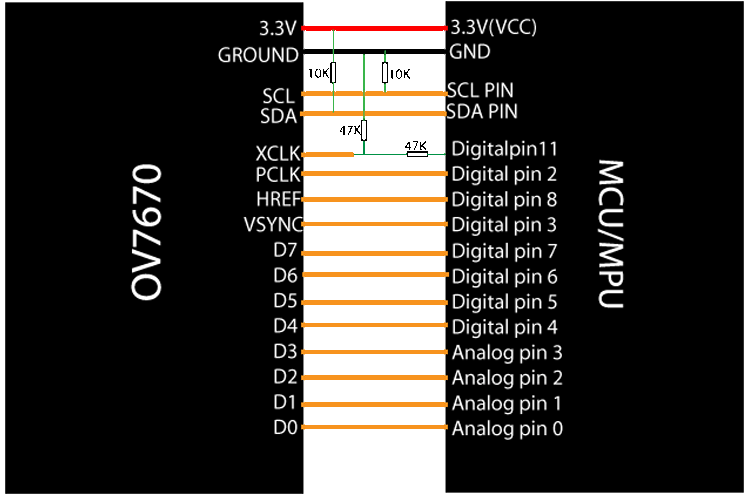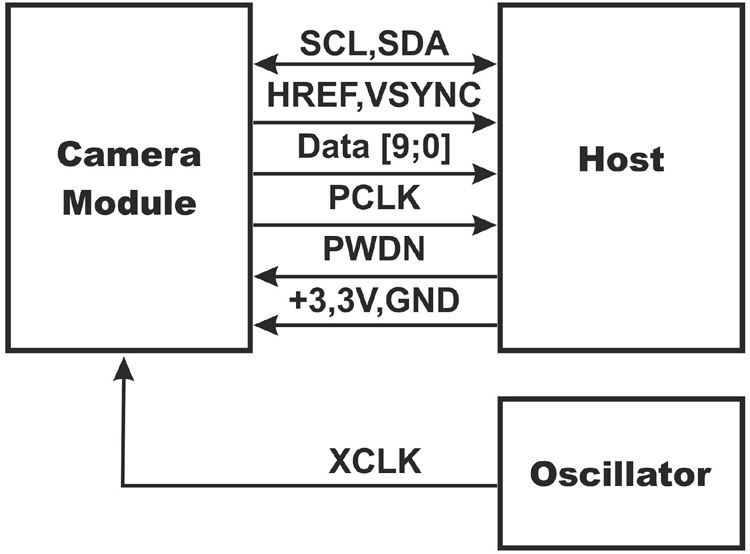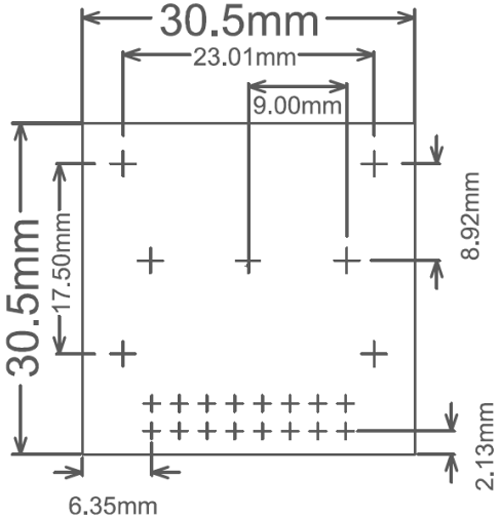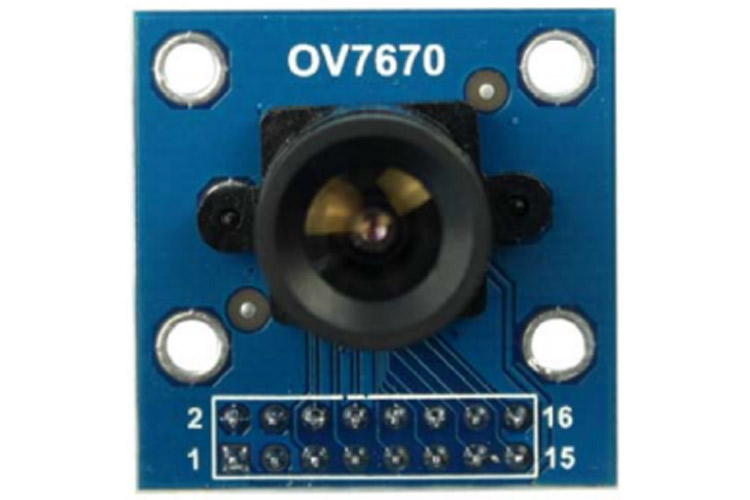CMOS OV7670 Camera Module
Description of CMOS OV7670 Camera Module
The OV7670 camera module is a CMOS image sensor that provides full-frame windowed 8-bit images in a wide range of image formats. The OV7670 sensor is controlled using Serial Camera Control Bus (SCCB) which is an I2C interface with a maximum clock frequency of 400Khz.
Features and specifications of CMOS OV7670 Camera Module
This section mentions some of the specifications and the features of the CMOS OV7670 Camera Module:
- Operating voltage: 3.3V DC
- Resolution: 640x480 VGA
- Optical Size: ⅙ inch
- Power Consumption: 60mW
- High-quality F1.8 / 6mm lens
- Output support for Raw RGB (GRB 4:2:2, RGB565/555/444), YUV (4:2:2) and YCbCr (4:2:2) formats
- S/N Ratio: 46 dB
- Maximum Image Transfer rate: 30 FPS for VGA
- Supports image sizes: VGA, CIF, and any size scaling down from CIF to 40x30
- Standard SCCB interface compatible with I2C interface
- Lens shading correction Flicker (50/60 Hz) auto-detection
- Saturation level auto adjust (UV adjust)
- Edge enhancement level auto adjust
Software Required to Analyze Output Image from CMOS OV7670
Arduino IDE and Serial Port Reader
Alternatives for CMOS OV7670 Camera Module
Arducam HQ, IMX219
Equivalents for CMOS OV7670 Camera Module
OV7675, OV2640, OV7725, OV5642, OV5647
Note: More technical information can be found in the CMOS OV7670 Module Datasheet linked at the bottom of this page.
Pin Configuration of CMOS OV7670 Camera Module
The camera module consists of 16 pins. The table below describes the pin types and their functions.
|
Pin Number |
Pin Type |
Description |
|
1 |
VCC |
+3.3V DC power input |
|
2 |
GND |
Ground |
|
3 |
SCL |
I2C Serial Clock |
|
4 |
SDA |
I2C Serial Data I/O |
|
5 |
VSYNK |
Vertical Sync output; Active High; Indicates active frames |
|
6 |
HREF |
Horizontal Reference; Active High; Indicates active pixels |
|
7 |
PCLK |
Pixel clock output from the sensor |
|
8 |
XCLK |
Master clock into the sensor |
|
9 |
Dout9 |
Pixel Data Outuput 9(MSB) |
|
10 |
Dout8 |
Pixel Data Output 8 |
|
11 |
Dout7 |
Pixel Data Output 7 |
|
12 |
Dout6 |
Pixel Data Output 6 |
|
13 |
Dout5 |
Pixel Data Output 5 |
|
14 |
Dout4 |
Pixel Data Output 4 |
|
15 |
Dout3 |
Pixel Data Output 3 |
|
16 |
Dout2 |
Pixel Data Outuput 2(LSB) |
Since the CMOS OV7670 camera module is created by different manufacturers and distributors, the pin configuration might differ. Some OV7670 modules also have 18 pins, 2 of the additional pins may be RESET and PWDN.
Connecting CMOS OV7670 Camera Module with an MCU/MPU
This section discusses the connections between a microcontroller or a microprocessor to a CMOS OV7670 camera module. It is easy to interface it to an MCU/MPU, but for some, the wiring could get a little complex. Make sure to use good quality and short-length jumper wires as improper wirings could induce noises and impact the picture quality.

Note: Some OV7670 modules also have 18 pins, 2 of the additional pins may be RESET and PWDN. These pins can be connected to the 3.3V and ground pin of the MCU/MPU, respectively.
Functional Block Diagram of the CMOS OV7670 Camera Module
The OV7670 module includes an image sensor array, timing generators, A/D Converters, Test pattern generators, DSP (Digital Signal Processor), Image scaler Digital Video port, Strobe flash control output, and LEDs.

The block diagram above shows how a camera-based system functions. The module is powered by a 3.3V supply. The module is connected to an external oscillator which provides the clock source for the camera module’s XCLK pin. With the proper configuration to the camera’s internal registers via the I2C bus, the camera module provides the pixel clock and the data output back to the host via HREF and VSYNC ports.
Applications for CMOS OV7670 Camera Module
Here are some of the applications of the OV7670 Camera Module:
- Cellular phone
- Facial Recognition
- Document scanning
- Surveillance systems
- Obstacle avoidance
2D Model of CMOS OV7670 Camera Module
Below is the 2D model of the OV7670 camera module. The dimensions can be used to design custom footprints of the module and use it while PCB and CAD model designing.

Note: All the dimensions are in millimeters.











